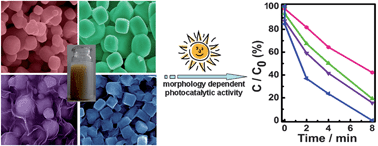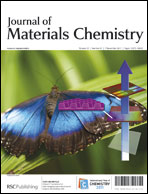Herein, we have demonstrated that spherical and quasi-cubic Ag/AgCl-based plasmonic photocatalysts could be controllably synthesized by means of a one-pot surfactant-assisted method, wherein an oil-in-water system is employed as synthesis medium. We have found that thus-produced nanostructures can display stable photocatalytic performance for the photodegradation of Methyl Orange (MO) pollutant when energized with sunlight or visible light, where morphology dependent and enhanced photocatalytic activity could be realized. Compared with the Ag/AgCl nanospheres, their quasi-cubic counterparts exhibit much higher photocatalytic activity, which could be further enhanced upon hybridization with graphene oxide (GO). Moreover, in contrast to the spherical Ag/AgCl nanospecies formulated via a water-in-oil medium, those synthesized through the oil-in-water system display higher photocatalytic activity. On the basis of our experimental facts, a plausible explanation has been proposed for these significant findings. The investigation has not only one-pot controllably produced sunlight energized Ag/AgCl-based plasmonic photocatalysts with morphology dependent catalytic performance, but also essentially increased their catalytic activity.

You have access to this article
 Please wait while we load your content...
Something went wrong. Try again?
Please wait while we load your content...
Something went wrong. Try again?


 Please wait while we load your content...
Please wait while we load your content...